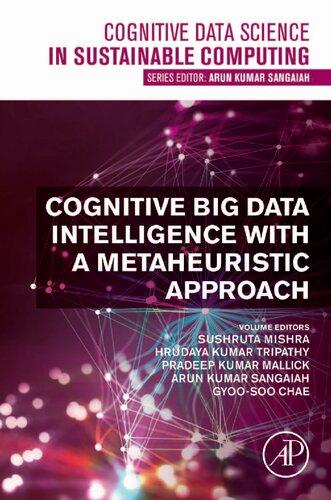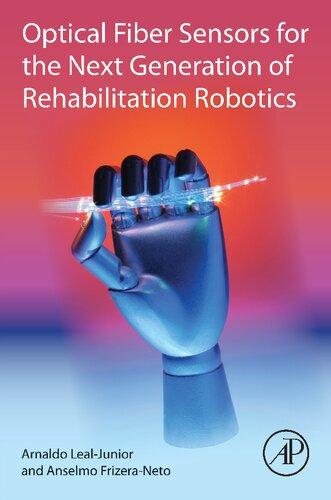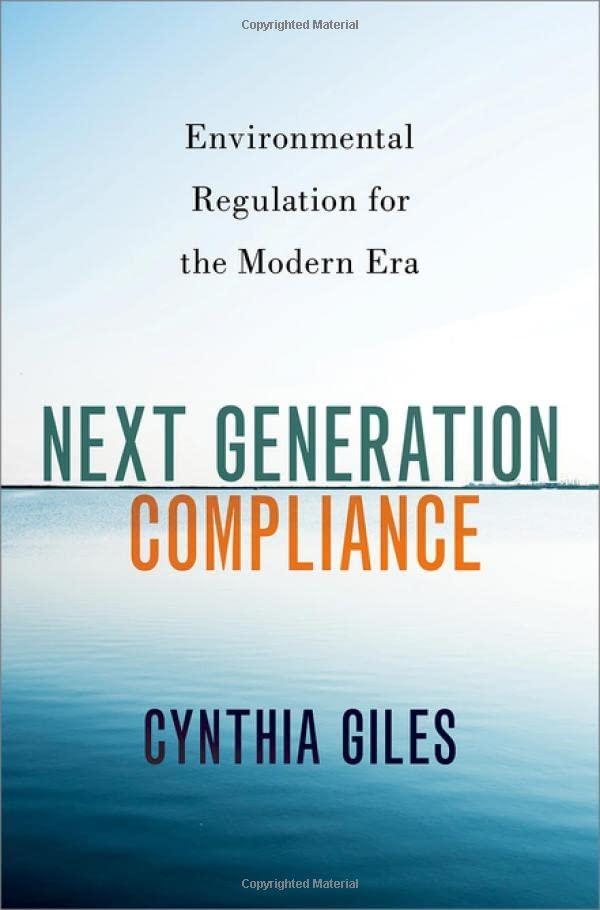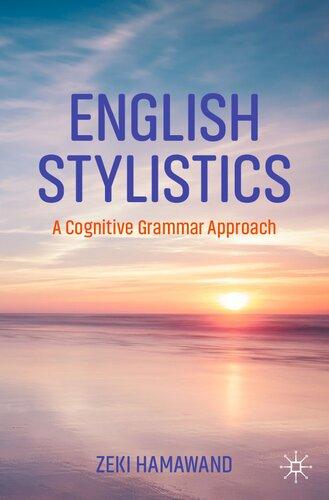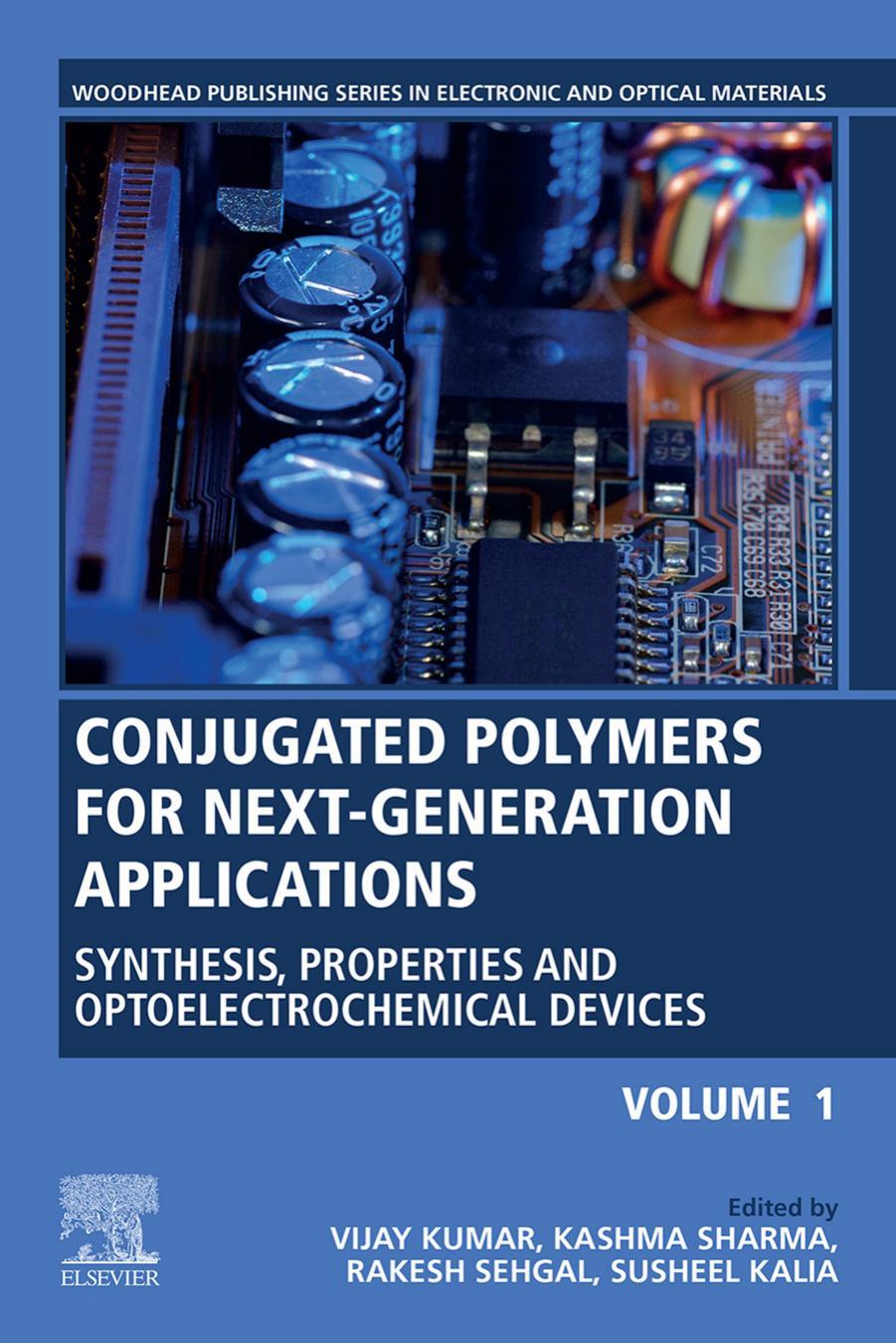Cognitive Engineering for Next Generation Computing
A Practical Analytical Approach
Edited by Kolla Bhanu Prakash, G. R. Kanagachidambaresan, V. Srikanth, E. Vamsidhar
This edition first published 2021 by John Wiley & Sons, Inc., 111 River Street, Hoboken, NJ 07030, USA and Scrivener Publishing LLC, 100 Cummings Center, Suite 541J, Beverly, MA 01915, USA © 2021 Scrivener Publishing LLC
For more information about Scrivener publications please visit www.scrivenerpublishing.com.
All rights reserved. No part of this publication may be reproduced, stored in a retrieval system, or transmitted, in any form or by any means, electronic, mechanical, photocopying, recording, or otherwise, except as permitted by law. Advice on how to obtain permission to reuse material from this title is available at http://www.wiley.com/go/permissions.
Wiley Global Headquarters
111 River Street, Hoboken, NJ 07030, USA
For details of our global editorial offices, customer services, and more information about Wiley products visit us at www.wiley.com.
Limit of Liability/Disclaimer of Warranty
While the publisher and authors have used their best efforts in preparing this work, they make no representations or warranties with respect to the accuracy or completeness of the contents of this work and specifically disclaim all warranties, including without limitation any implied warranties of merchantability or fitness for a particular purpose. No warranty may be created or extended by sales representatives, written sales materials, or promotional statements for this work. The fact that an organization, website, or product is referred to in this work as a citation and/or potential source of further information does not mean that the publisher and authors endorse the information or services the organization, website, or product may provide or recommendations it may make. This work is sold with the understanding that the publisher is not engaged in rendering professional services. The advice and strategies contained herein may not be suitable for your situation. You should consult with a specialist where appropriate. Neither the publisher nor authors shall be liable for any loss of profit or any other commercial damages, including but not limited to special, incidental, consequential, or other damages. Further, readers should be aware that websites listed in this work may have changed or disappeared between when this work was written and when it is read.
Library of Congress Cataloging-in-Publication Data
ISBN 978-1-119-71108-7
Cover image: Pixabay.Com
Cover design by Russell Richardson
Set in size of 11pt and Minion Pro by Manila Typesetting Company, Makati, Philippines
Dedicated to our parents, family members, students and the Almighty.
Janmenjoy Nayak, P. Suresh Kumar, Dukka Karun Kumar Reddy, Bighnaraj Naik and Danilo Pelusi
4
J. Ramkumar, M. Baskar and B. Amutha
4.3.2.1
5 iParking—Smart
J.A.D.C.A. Jayakody, E.A.G.A. Edirisinghe, S.A.H.M. Karunanayaka, E.M.C.S. Ekanayake, H.K.T.M. Dikkumbura and L.A.I.M. Bandara
5.1
5.3
5.4
5.5
5.6
5.6.1
5.6.2
5.6.3
5.6.4
5.6.5
6.1
6.2
6.3
6.4
6.5
5.6.6
8.4
9.4.2
9.5.1
9.6.1
10.5.8
Anjali Yeole and D.R. Kalbande
11.3
11.3.1
11.3.2
C. Saranya Jothi, Carmel Mary Belinda and N. Rajkumar
Preface
Cognitive computing is a hardware and software element which is presently being used mainly in smart system development. Technologies such as artificial intelligence, machine learning, advanced analytics, natural language processing, big data analytics, and distributed computing come under the umbrella of cognitive computing. The impact of this technology can be seen in areas such as healthcare, business, decision-making, personal lives, and many more. Cognitive engineering is commonly used in analysis, design, decision-making, and sociotechnical systems; and cognitive physical systems are used in applications such as human–robot interactions, transport management, industrial automation, healthcare, agriculture, etc. Human individual interactions and group behavior are important to all these applications. Cognitive cyber-physical systems are applied in different areas such as smart manufacturing, agriculture, education, energy management, security, environmental monitoring, transportation systems, process control, smart cities and homes, medical healthcare devices, etc. The increasing complexity of cognitive computing also includes the security problems confronted by such networks. This rise of the Internet of Things (IoT) network complexity is due to too many devices being interconnected with each other through the internet along with the enormous amount of data originating from these devices. Also, novel security issues arise relating to the development of the IoT while conventional security issues become more severe. The major reasons for this are the heterogeneity and the substantially large scale of the objects. As the threats to IoT devices are increasing and the security metrics are based on the developmental aspects of software as well as network, the hackers can expand control and carry out malicious activities and attacks on other devices close to the compromised one. Due to the natural significance of the low-power and low-memory nature of these devices, these devices do not have malware protection or virus protection software. The cognitive approach to the IoT provides connectivity to everyone and everything since IoT connected devices are known to increase rapidly. When the IoT is integrated with
cognitive technology, performance is improved, and smart intelligence is obtained. Different types of datasets with structured content are discussed based on cognitive systems. The IoT gathers the information from the realtime datasets through the internet, where the IoT network connects with multiple devices.
This book mainly concentrates on providing the best solutions to existing real-time issues in the cognitive domain. Healthcare-based, cloud-based and smart transportation-based applications in the cognitive domain are addressed. The data integrity and security aspects of the cognitive computing domain are also thoroughly discussed along with validated results.
Editors
Kolla Bhanu Prakash
G. R. Kanagachidambaresan V. Srikanth E. Vamsidhar
Acknowledgment
We would like to thank the Almighty and our parents for their endless support, guidance and love throughout all the stages of our lives. We are grateful to our beloved family members for standing beside us throughout our careers, which are advanced with the editing of this book.
We would especially like to thank Sri. Koneru Satyanarayana, president of K.L. University, India, and Vel Tech Rangarajan Dr.Sagunthala R&D Institute of Science and Technology for their continuous support and encouragement throughout the preparation of this book. We dedicate this book to them.
Many thanks go to our students and family members who have put in their time and effort to support and contribute in some manner. We would like to express our gratitude to all who supported, shared, talked things over, read, wrote, offered comments, allowed us to quote their remarks and assisted in the editing, proofreading and design of this book throughout the journey to its completion. We also give our sincere thanks to the open dataset providers.
We believe that the team of authors provided the perfect blend of knowledge and skills that went into authoring this book. We thank each of the authors for devoting their time, patience, perseverance and effort towards this book; we think that it will be a great asset to all researchers in this field!
We are grateful to Martin Scrivener and all other members of the publishing team, who showed us the ropes to creating a book. Without that knowledge we would not have ventured into such a project. Their trust in us, guidance and the necessary time and resources afforded us, gave us the freedom to manage this book.
Last, but definitely not least, we’d like to thank our readers, and we hope our work inspires and guides them.
Editors Kolla Bhanu Prakash
G. R. Kanagachidambaresan V. Srikanth E. Vamsidhar
Introduction to Cognitive Computing
Vamsidhar Enireddy*, Sagar Imambi† and C. Karthikeyan‡ Department of Computer Science and Engineering, Koneru Lakshmaiah Education Foundation, Guntur, India
Abstract
Cognitive computing is an interdisciplinary subject that brings under its umbrella several techniques such as Machine learning, big data analytics, artificial intelligence, analytics, natural language processing, and probability and statistics to gather information and understand it using different senses and learning from their experience. Cognitive computing helps humans in taking the right decisions at a right time helping the people to grow in their respective fields. In this chapter, we are going to discuss cognitive computing and the elements involved in it. Further, we will learn about the components and hypothesis generation and scoring of it.
Keywords: Artificial intelligence, cognition, cognitive computing, corpus, intuitive thinking, hypothesis generation, machine learning
1.1 Introduction: Definition of Cognition, Cognitive Computing
The term Cognition is defined as “The procedure or the method of acquiring information and understanding through experience, thought and the senses” [1]. It envelops numerous parts of procedures and intellectual functions, for example, development of information, thinking, reasoning, attention, decision making, evaluating the decisions, problem-solving, computing techniques, judging and assessing, critical thinking, conception,
*Corresponding author: enireddy.vamsidhar@gmail.com
†Corresponding author: simambi@gmail.com
‡Corresponding author: ckarthik2k@gmail.com
Kolla Bhanu Prakash, G. R. Kanagachidambaresan, V. Srikanth, E. Vamsidhar (eds.) Cognitive Engineering for Next Generation Computing: A Practical Analytical Approach, (1–48) © 2021 Scrivener Publishing LLC
and creation of language. This process produces new information using existing information. A large number of fields especially psychology, neuroscience, biology, philosophy, psychiatry, linguistics, logic, education, anesthesia, and computer science view and analyze the cognitive processes with a diverse perspective contained by dissimilar contexts [2].
The word cognition dates to the 15th century, derived from a Latin word where it meant “thinking and awareness” [3]. The term comes from cognitio which means “examination, learning or knowledge”, derived from the verb cognosco, a compound of con (‘with’), and gnōscō (‘know’). The latter half, gnōscō, itself is a cognate of a Greek verb, gi(g)nόsko (γι(γ)νώσκω, ‘I know,’ or ‘perceive’) [4, 5].
Aristotle is probably the first person who has shown interest to study the working of the mind and its effect on his experience. Memory, mental imagery, observation, and awareness are the major areas of cognition, hence Aristotle also showed keen interest in their study. He set incredible significance on guaranteeing that his examinations depended on exact proof, that is, logical data that is assembled through perception and principled experimentation [6]. Two centuries later, the basis for current ideas of comprehension was laid during the Enlightenment by scholars, like, John Locke and Dugald Stewart who tried to build up a model of the psyche in which thoughts were obtained, recalled, and controlled [7].
As Derived from the Stanford Encyclopedia of Philosophy the Cognitive science can be defined as “Cognitive science is the interdisciplinary study of mind and intelligence, embracing philosophy, psychology, artificial intelligence, neuroscience, linguistics, and anthropology.”
The approach for cognitive computing depends on understanding the way how the human brain can process the information. The main theme or idea of a cognitive system is that it must able to serve as an associate for the human’s rather than simply imitating the capabilities of the human brain.
1.2 Defining and Understanding Cognitive Computing
Cognitive computing can be defined as hardware and software to learn so that they need not be reprogrammed and automate the cognitive tasks [11]. This technology brings under its cover many different technologies such as Artificial Intelligence, Machine Learning, Advanced Analytics, Natural Language Processing, Big Data Analytics, and Distributed Computing. The impact of this technology can be seen in health care, business, decision making, private lives, and many more.
Two disciplines are brought together with cognitive computing
i. Cognitive Science ii. Computer Science.
The term cognitive science refers to the science of mind and the other is a computational approach where the theory is put into practice.
The ultimate objective of cognitive computing is that it must able to replicate the human thinking ability in a computer model. Using technologies like machine learning, natural language processing, advanced analytics, data mining, and statistics had made these things possible where the working of the human brain can be mimicked [8].
From a long back, we can construct the computers which perform the calculations at a high speed, also able to develop supercomputers which can do calculations in a fraction of second, but they are not able to perform the tasks as humans do like the reasoning, understanding and recognizing the objects and images.
Cognitive researchers discover the mental capability of humans through an examination of the aspects like memory, emotion, reasoning, perception, and language [12]. Figure 1.1 shows the Human centered cognitive cycle. On analysis, the human being’s cognitive process can be divided into two stages. One is the humans use their sensory organs to perceive the information about their surrounding environment and become aware of
it, in this manner humans gather the input from the outside environment. The second stage is that this information is carried by the nerves to the brain for processing and the process of storing, analyzing, and learning takes place [13].
Many researchers and scientists from many years had tried to develop the systems that can mimic the human thoughts and process, but it is relatively complex to transform the intricacy of thinking of humans and actions into systems. Human beings have a lot of influence on them such as perception, culture, sentiment, lifestyle, and implicit beliefs about their surrounding environment. Cognition is the basic framework that not only leverages the way we imagine but also the way we behave and the way we make decisions. To understand this let us consider some examples that we see around us. Why there are different recommendations and approaches between the treatments for the same disease with different doctors? Why do people with the same background born and brought up in the same family have different views and opinions about the world?
Dr. Daniel Kahneman is a Nobel Prize winner in economic sciences in 2002 had paved a way for the cognitive computing approach. He had made a lot of research in the area of psychology of judgment and decision making [11]. The approach is divided into two systems: 1. Intuitive thinking and 2. Controlled andrulecentric thinking.
System 1: Intuitive thinking
In this system, reasoning occurs in the human brain naturally. The conclusions are drawn using our instincts. In System 1 human thinking begins the moment they are born. Humans learn to notice and recognize the things and their relationship by themselves. To illustrate this we consider some examples for better understanding. The children correlate their parent’s voices with safety. People correlate strident sound with danger. At the same time, we can see that children with a harsh mother are not going to have a similar experience with the voice of the mother as the child with a good mother. Humans learn more things over time and continue assimilating their thoughts into their mode of working in the world. The chess grandmaster can play the game with their mind anticipating their opponent’s move and also they can play the game entirely in their mind without any need to touch the chessboard. The surrounding environment plays a major role in a person’s behavior, it affects their emotions and attitudes. A person brought up in treacherous surroundings, have a different attitude about the people compared to a person brought up in healthy surroundings. In System1 using the perception, we gather the data about the world and connect the events. In the cognitive computing point of view, this System 1 had taught the way how we gather information from the
surroundings helps us to conclude. Figure 1.2 shows collaboration between the Intuitive thinking and analysis.
System 2: Controlled and rulecentric thinking.
In this process, the reasoning is based on an additional premeditated process. This conclusion is made by taking into consideration both observations and test assumptions, rather than simply what is understood. In this type of system the thinking process to get a postulation, it uses a simulation model and observes the results of that particular statement. To do this a lot of data is required and a model is built to test the perceptions made by System 1. Consider the treatment of cancer patients in which a large number of ways and drugs are available to treat the patients. The cancer drugs not only kill the cancer cells but also kill the healthy cells, making the patient feel the side effects of it. When a drug company comes with any novel drug it tests on animals, records its results, and then it is tested on humans. After a long verification of the data checking the side effects of the drug on the other parts of the body, the government permits to release the drug into the market where it takes a long time from research to availability of that drug. In System 1 when a drug can destroy the cancer cells it determines it can be put onto the market. It is completely biased. System 2 will not conclude as of System 1, it collects the data from various sources, refines it, and then it comes to a conclusion. Although this process is slow it is important to study all the things before jumping to a conclusion. One
Responses
Figure 1.2 Intuitive thinking and analysis [11].
of the most complex problems is predicting the outcomes as many factors can affect the outcomes. So, it is very important to merge the spontaneous thinking with the computational models.
The cognitive system is based on three important principles
1. Learn
2. Model
3. Hypothesis generation.
1. Learn: The cognitive framework must be able to learn. The framework use information to make inductions about an area, a theme, an individual, or an issue dependent on preparing and perceptions from all assortments, volumes, and speed of information.
2. Model: To learn, the framework it requires to make a model or portrayal of a domain which incorporates interior and conceivably exterior information and presumptions that direct what realizing calculations are utilized. Understanding the setting of how the information fits into the model is critical to a cognitive framework.
3. Generate hypotheses: A cognitive framework expects that there will be several solutions or answers to a question. The most fitting answer depends on the information itself. In this way, an intellectual framework is probabilistic. A theory is an up-and-comer clarification for a portion of the information previously comprehended. A cognitive framework utilizes the information to prepare, test, or score speculation.
1.3 Cognitive Computing Evolution and Importance
The basis for cognitive computing is artificial intelligence. Artificial Intelligence has roots back at least 300 years ago, but in the last 50 years, there is much research and improvement in this field which has impacted the development of cognitive computing. The combined work of the mathematicians and scientists in converting the working of a brain into a model such that it mimics the working of the brain, but it has taken a long time to make them work and think like a human brain. During WW-II England has achieved victory due to the decoding of the messages of the opponent and this is achieved by the great work of Alan Turing who worked on the cryptography. Later Turing worked on machine learning and published a
paper “Computing Machinery and Intelligence” in which he put up a question “Can machines think”, he greatly believed that machines can think and also throw away the argument that the machines cannot think as they do not have any emotions like the human beings. In the later years, he came up with the famous Turing test to prove that machines can think as human beings do. From ten many scientists had contributed to the development of artificial intelligence and can be termed as modern artificial intelligence. The cognitive computing is still evolving. Figure 1.3 shows how the evolution of Cognitive Computing had taken place over the years.
The main focus of cognitive computing is on processing methods, here the data that is to be processed need not be big. The most important thing in understanding the working of the brain is how a brain can decode the image and it is well known that 20% of the brain working function is allocated for the vision and the working of the brain in the image processing is highly efficient. The brain can do things with limited data and even the limited memory is not affecting the cognition of image information. Cognitive science helps to develop the algorithms required for cognitive computing, making the machines to function like a human brain to some degree of extending [14]. The only way to build up the computers to compute as a human brain is to understand and cognize the things and surroundings in the perspective of how a human brain thinks. The cognitive computing is very much important and critical to building up the cognition of a machine and thereby making it to understand the requirements of humans [15]. There is a necessity to make the machines think like humans and they must be able to make decisions and have some intelligence as of humans, of course, a lot of improvement is to be made in this field. With the help of the present techniques, it is possible to make machines think like humans, as they involve reasoning, understanding complicated emotions.
1. Identifying and understanding the knowledge from the information extracted from various sources
2. It is an interdisciplinar y study of how a human brain works. It includes Computer Science, Neuroscience, psychology, linguistics, Philosphy etc.
3. Dealing with both complex and high volumes of data. The existing technologies cannot be used to ex tract, search, store, share, analyze and process the data
4. Cognitive Computing is to enable the machines to have intelligence, thinking and reasoning like humans
Figure 1.3 Showing the evolution of Cognitive Computing [13].
Cognitive computing had made tremendous progress and also exceeded the conventional machine learning. Internet of Things is one technology that had made very good progress and helping the people in many ways and now IoT is embedded with cognitive computing developing a smarter Internet of Things systems assisting the humans in many ways like providing vital suggestions and helping in the decision making [16].
In today’s world with a lot of sensors around a lot of data is being generated all the time in many forms. The evolution of cognitive computing is to make a sense in this multifaceted world with this large volume of data. The older technologies have been developed to make sense with the structured data and machines, software is also developed to deal with such type of data and gathering information from the structured data. The growth of social site and apps have impacted the growth in the unstructured and semi-structured data and these older technologies are no more a way to handle these types of data and the cognitive computing helps in gathering the information from all types of data Unstructured, Semi-structured, and Structured data. Without the handling of these different types of data, a lot of information can be missed and the cognitive computing is going to help the humans to collaborate with the machines so that a maximum gain can be extracted from them. In the past also we have seen the technology had transformed the industries and also the human way of living from the last decades. Transactional processing had started in the 1950s had brought a lot of transformation in government operations and also in business transactions, giving a lot of efficient ways to deal with the operations. During that time the data was limited and major data is structured data and tools are developed to handle this type of data and many mining tools are developed to extract the information from that data. A large amount of data cannot be handled by the traditional tools and methods, so we need a mixture of traditional methods with traditional technical models with the innovations to solve the niggling problems.
1.4 Difference Between Cognitive Computing and Artificial Intelligence
Although it was stated that the foundation for cognitive computing is artificial intelligence there is a lot of difference between the two.
The basic use of artificial intelligence is to solve the problem by implementing the best algorithm, but cognitive computing is entirely different from artificial intelligence as cognitive computing adds the reasoning,
intelligence to the machine and also analyzes different factors to solve the problem.
Artificial Intelligence mimics the human intelligence in machines. This process comprises making the machines learn constantly with the changing data, making sense of the information, and taking decisions including the self-corrections whenever needed.
Human beings use the senses to gather information about the surrounding environment and process that information using the brain to know about the environment. In this context, we can define that artificial intelligence can also include replicating the human senses such as hearing, smelling, touching, seeing, and tasting. It also includes simulating the learning process and this is made possible in the machines using machine learning and deep learning. Last but not least is human responses achieved through the robotics [18].
The cognitive computing is used to understand and simulate the reasoning and human behavior. Cognitive Computing assists humans to take better decisions in their respective fields. Their applications are fraud detection, face and emotion detection, sentiment analysis, risk analysis, and speech recognition [17].
The main focus of cognitive computing includes
i. To solve complex problems by mimicking human behavior and reasoning.
ii. Trying to replicate the humans in solving the problems
iii. Assists the human in taking decisions and do not replace humans at all.
Artificial Intelligence focus includes
i. To solve complex problems it augments human thinking, it tries to provide accurate results.
ii. It tries to find new methods to solve problems which can potentially be superior to humans
iii. The main intent of AI is to solve the problem utilizing the best algorithm and not simply mimicking the human brain.
iv. The human role is minimized in taking the decisions and artificial intelligence takes over the responsibility.
The main advantage that needs to be highlighted is that Cognitive Computing does not pose any threat to humans. Cognitive computing helps
in assisting human beings in taking better decisions in their tasks, endowing human beings with high precision in analyzing the things, same time having everything under their control. In the case of the health care system, cognitive computing assists the specialists in the diagnosis of the disease using the data and advanced analytics, by which it helps to take quality decisions by the doctors [10]. In Figure 1.4 we can see the growth of Cognitive Computing in various continents. In Figure 1.5 we can see the growth of revenue in the various locations of the world.
Figure 1.4 Global cognitive market [17].
Figure 1.5 Global cognitive market revenue, by geography [17].
1.5 The Elements of a Cognitive System
Several different elements constitute the cognitive system, starting from hardware and operational prototypes to modern machine learning algorithms and applications. Figure 1.6 gives a general design for building a cognitive system.
1.5.1 Infrastructure and Deployment Modalities
The system needs to meet the demands of the industries as they continuously grow and the infrastructure should be flexible to carry on the applications required for the industry. A large amount of data is required to be processed and managed; this data consists of both public and private data. Cloud infrastructure services are required and constant support should be given, providing a highly parallel and distributed computing environment.
General Design of a Cognitive System Applications
Presentation and Visualization Services Generate Hypotheses
External Data
Resources: Unstructured (text) (video, Images, sensors, sound) Structured (databases)
Figure 1.6 The general design of a cognitive system [11].
1.5.2 Data Access, Metadata, and Management Services
Data is the most important point where cognitive computing revolves around, so the data collection, accession, and maintaining it must have a very important role. A lot of essential services are required for adding the data and also using it. To ingest the data utmost care should be taken to check the source from which the data is originated. As a result, there is a requirement that data should be classified based on the origin of data, as it is required to check the data source was trusted or not. The most important thing to learn here is that the data is not static as it is required to update the data from the sources and upload it into the systems. The corpus is the one that holds the data and it relies on various internal and external sources. As a large data is available, a check should be done on data sources, data should be verified, cleaned, and check for accuracy so that it can be added into the corpus. This is a mammoth task as it requires a lot of management services to prepare the data.
1.5.3 The Corpus, Taxonomies, and Data Catalogs
Firmly connected with the information access and the other executive layer are the corpus and data analytics administrations. A corpus is the information base of ingested information and is utilized to oversee classified information. The information required to build up the area for the framework is incorporated in the corpus. Different types of information are ingested into the framework. In numerous cognitive frameworks, this information will principally be text‐based (records, patient data, course books, client reports, and such). Other cognitive frameworks incorporate numerous types of unstructured and semi‐structured information, (for example, recordings, pictures, sensors, and sounds). What’s more, the corpus may incorporate ontologies that characterize explicit elements and their connections. Ontologies are regularly evolved by industry gatherings to arrange industry-specific components, for example, standard synthetic mixes, machine parts, or clinical maladies and medicines. In a cognitive framework, it is frequently important to utilize a subset of an industry‐based ontology to incorporate just the information that relates to the focal point of the cognitive framework. A taxonomy works inseparably with ontologies. It also provides a background contained by the ontology.
1.5.4 Data Analytics Services
These are the methods used to increase the comprehension of the information ingested and managed inside the corpus. Ordinarily, clients can take a

